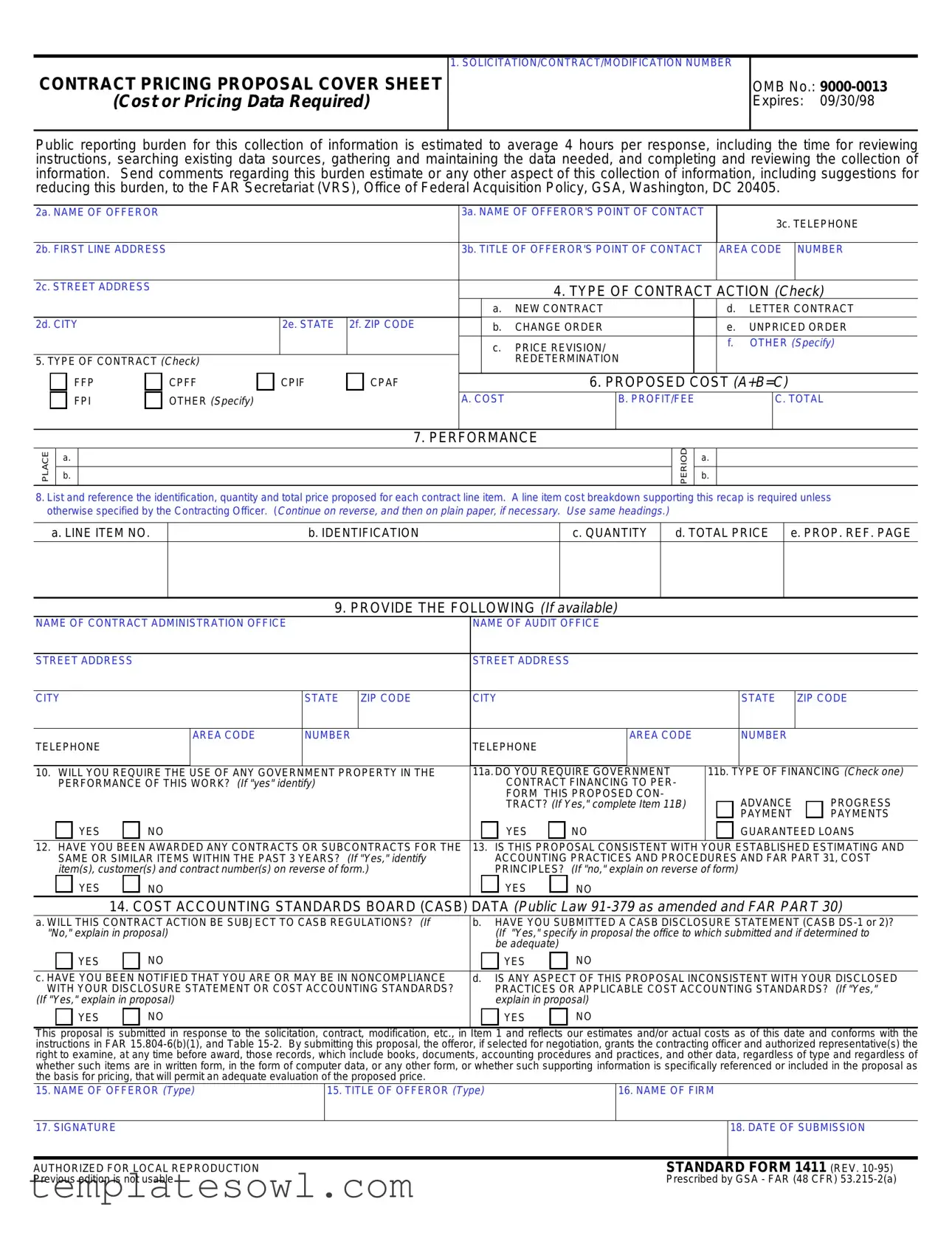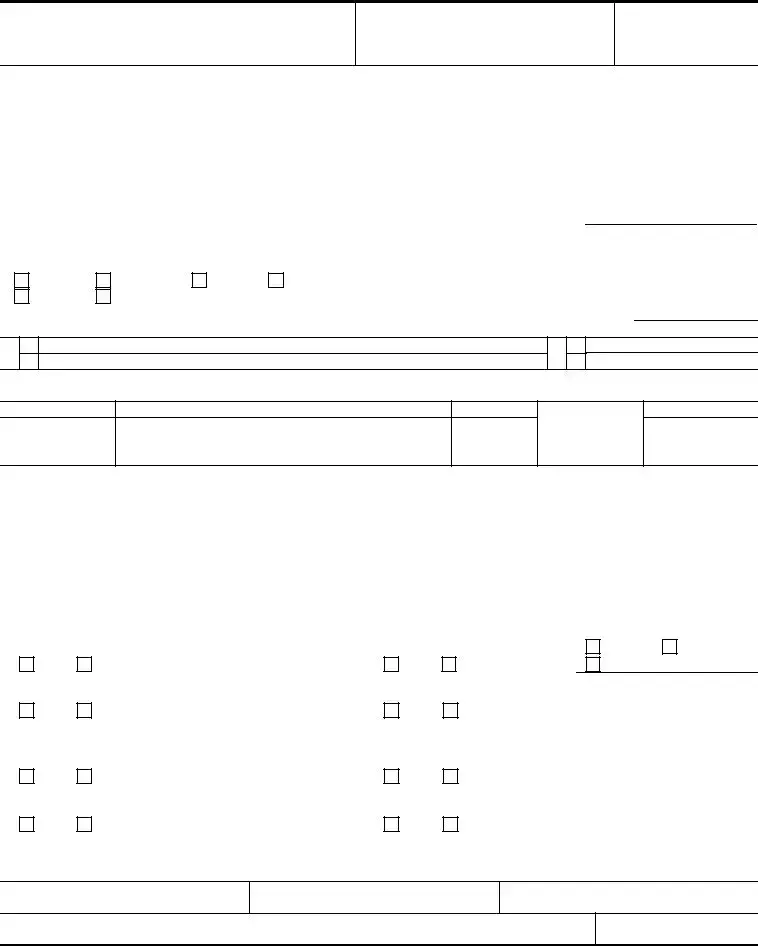What is the Standard Form 1411?
The Standard Form 1411 is a document used in federal contracting known as the Contract Pricing Proposal Cover Sheet. It is primarily required when submitting cost or pricing data as part of a proposal for government contracts. The form lays out essential information and ensures that both the offeror and the government have a clear understanding of the proposed costs, contract type, and other critical details related to the proposal process.
What information is required on the form?
The form requests vital information, including the solicitation or contract number, the name and contact information of the offeror, type of contract action, the proposed cost breakdown (cost, profit/fee, and total), performance period, and detailed line item proposals. It also asks about the need for government property, any previous contracts awarded, compliance with accounting standards, and whether the contract action is subject to Cost Accounting Standards Board (CASB) regulations.
Why is cost data necessary in this proposal?
Cost data is required to ensure that the government can evaluate the reasonableness and allowability of the proposed costs. This evaluation is crucial for price negotiation and to ensure that taxpayers' money is used effectively. By providing detailed cost information, offerors demonstrate transparency and accountability, which are essential in government contracting.
What are the different types of contract actions listed on the form?
The form outlines several types of contract actions, including new contracts, change orders, price revisions, letter contracts, unpriced orders, and others. Offerors must select the appropriate type based on the nature of their proposal, helping the government categorize and process the proposals accurately.
How does the form facilitate compliance with accounting standards?
By asking specific questions related to accurate accounting practices and Cost Accounting Standards, the form promotes consistency in financial reporting. Offerors must confirm whether their proposal adheres to established estimating, accounting practices, and whether they have submitted a Disclosure Statement. This compliance helps the government ensure that the proposed costs align with industry standards and practices.
What happens if there is a change in the offeror's estimating practices?
If an offeror's proposal is inconsistent with their established estimating and accounting practices, they must provide an explanation on the form. Such inconsistencies can raise red flags about pricing and cost reasoning, so the offeror should be ready to justify any deviations to the contracting officer.
What implications does the submission of this proposal have for the offeror?
Submitting the Standard Form 1411 asserts the offeror's commitment to the provided information, indicating it reflects their estimates or actual costs and adheres to federal regulations. It grants the contracting officer the right to review supporting documentation, which allows for thorough evaluation and negotiation before any contract award. This transparency can be critical in establishing trust and credibility between the government and the contractor.
What should be done if the information on the form changes after submission?
If there are changes to the information after the submission of the form, the offeror has the responsibility to communicate these changes to the contracting officer promptly. Changes can affect contract negotiations and award decisions, so maintaining accurate and current information is essential throughout the procurement process.

